A diesel heater is an optimal heating solution for RVs, sheds, and boats. Diesel fuel and air from an intake pipe mix reach the combustion chamber and ignite. It’s simple enough technology, but not all diesel heaters are created equal. What should you look for when selecting one?
Here are the top considerations when buying a diesel heater:
- Price
- Heat output
- Safety features
- Altitude settings
- Ease of use
- Noise
- Maintenance
- Electrical requirements
- Warranty
- Fuel efficiency
You shouldn’t blindly jump into any diesel heater purchase with so many factors to mull over. This guide will go point by point to help you select the ideal diesel heater for your trailer or RV.
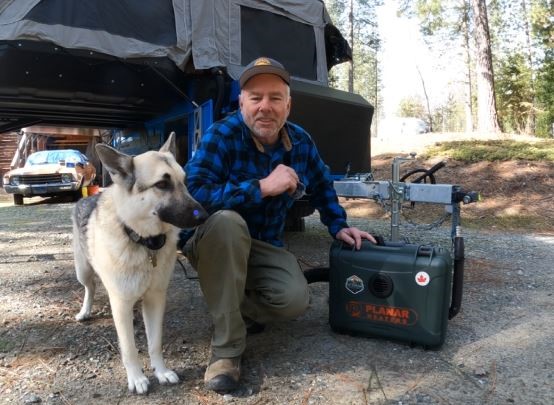
1. Price
Let’s not waste a second. I know one of the top considerations for your decision is the cost of the diesel heater, and rightfully so!
An RV diesel heater costs between $150 and $1,000, sometimes more. The expensive models usually include a full mounting kit with accessory parts for quick installation. You might have to purchase those parts separately if you buy a lower-cost heater.
Price is commensurate with quality. That’s the case with almost anything, so you should expect as much with a diesel heater.
A low-cost option by a manufacturer you’ve never heard of might seem like a great bargain at the time. The diesel heater will work well for several months, but it happens fast once it begins going downhill.
You don’t have to spring for the most expensive heater. However, you should allocate some funds toward this purchase.
You’re only doing yourself and your wallet a favor. A well-built diesel heater will last longer, preventing the need for costly repairs and replacements.
2. Heat Output
Diesel heaters produce different levels of output depending on the model. A heavy-duty 5KW heater will generate 17,000 BTUs of heat, while smaller 2KW or 3KW models will release much less.
You can determine how much heat output you need by measuring your RV in square feet. A smaller travel trailer or Class B motorhome does not need much heat output in BTUs. You don’t want your RV to feel like a sauna!
However, larger vehicles such as full-sized travel trailers and Class A RVs should increase the heat output due to the additional square footage.
While too much heat output can be problematic, having too little is just as bad in its own way. You’ll shiver the whole night through, which defeats the entire purpose of owning a diesel heater.
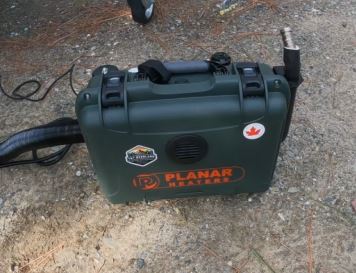
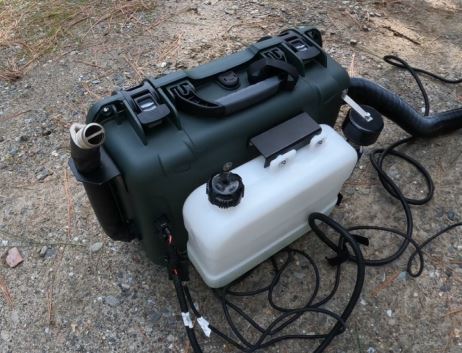
3. Safety Features
Diesel heaters are a smart heating solution for motorhome owners due in part to the plentiful safety features present in the best models.
For example, a diesel heater should include an auto-shutoff. Perhaps the heater will turn itself off if it’s run for X minutes, or it will power down if it exceeds a recommended safe temperature.
The heater must also include some form of ventilation. Producing heat from diesel and air creates gases, the most damning of which is carbon monoxide.
Carbon monoxide has no smell, taste, or color, so it can linger in the air unnoticed until it causes severe illness or even death.
I also must make one note here. Diesel heaters are available for outdoor and indoor use, but the two couldn’t be more different. An outdoor diesel heater is significantly larger and will produce a higher heat output, while an indoor model is smaller and produces less heat.
Using an outdoor heater inside can be disastrous, as that’s not its intended use. The heater could produce more carbon monoxide, creating a deadly scenario. Double-check that your is an indoor heater before you purchase it.
4. Altitude Settings
Do you often go camping at high altitudes? If so, you must take special consideration into mind as you shop around for an indoor diesel heater for your motorhome.
If you stick within an altitude of 5,000 feet or so over sea level, you shouldn’t notice any reduced functionality from the heater. However, once you surpass 5,000 feet over sea level, and certainly when you reach 6,000 feet, air changes can affect how efficiently the diesel heater runs.
In short, if the heater can’t get enough air to mix with the diesel, you might have impartial combustion. This reaction can produce more carbon monoxide than during proper combustion, so it’s a serious health hazard.
Diesel heater manufacturers combat this irksome problem by regulating the levels of fuel and air to keep the heater operating at higher altitudes. However, such a feature isn’t guaranteed and is usually only found in higher-end heaters.
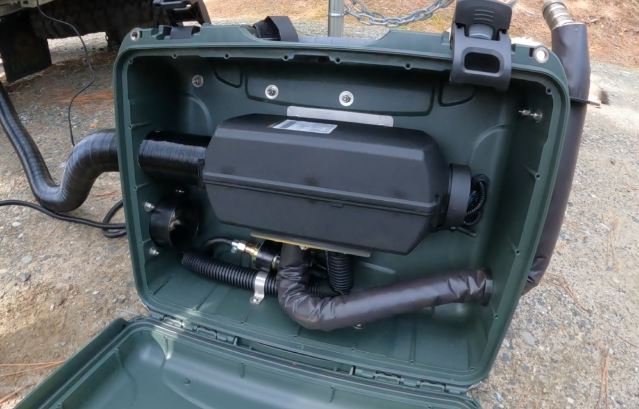
5. Ease of Use
Diesel heaters are designed for their simplicity of use, but you should still consider this factor as you weigh your options.
The best heater for you should plug in easily, weigh little enough to transport it on your travels easily, and have accessible on/off buttons. It’s also beneficial if the heater indicates when it’s running low on fuel so you can top it off before it depletes, leaving you shivering!
6. Noise Levels
One of the biggest downsides of selecting a diesel heater to warm your motorhome is its propensity for noise.
This can’t be helped to some extent. Diesel heaters will naturally make noise as they operate. This usually doesn’t bother most people much during the day, but it’s a different story at night when you’re trying to get some shuteye.
The sounds of your heater can leave you tossing and turning all night and feeling bleary-eyed in the morning.
The quality of the heater you choose goes a long way toward determining how loud it will run. Cheaper heaters have lower-quality components that will constantly rattle or hum. Higher-end diesel heaters usually only operate loudly upon startup, and then you don’t hear them as much.
7. Required Maintenance
Diesel heaters run their best with occasional maintenance, even if you bought a more expensive model. Let’s go over the maintenance steps required.
Step 1 – Remove the Heater from Your Motorhome
This should be fast and simple if yours is a portable model. However, if you have a heater built into your RV, you must unwire the fan and then remove the hot air ducting outlet. From there, detach the exhaust outlet, combustion air inlet, and fuel inlet pipe, which are located under your vehicle.
The heater’s wiring harness will have a plastic covering so the wires don’t sit exposed. You can usually detach this easily enough.
If your diesel heater is hard-wired into your motorhome, you must also uninstall its plumbing. This entails detaching a bracket below the heater, then removing the pipes by loosening the nuts.
Step 2 – Disassemble the Diesel Heater
Put the heater on a flat surface and detach its outer casing so you can get inside and clean it up. Look for plastic end caps and unscrew them one at a time. You can then separate the casing from the heater.
Next, unclip the fan impeller and remove the upper body. You should have easy access to the combustion chamber. It will have a glow pin secured; leave that be for now.
Step 3 – Clean the Heater Components
The most prominent issue is the carbon deposits, which can coat the interior components of the diesel heater. I recommend wearing gloves and a face mask when working near the deposits, as they can linger in the air.
You might want to clean your diesel heater outdoors to disperse the deposits. Once it’s clean, you can replace the glow pin with a new one.
Step 4 – Reassembly
Your diesel heater just got a thorough cleaning and will work better than it has since you first bought it. Work in reverse to put all the parts together. You’re all done!
Continue maintaining the diesel heater once every few months.
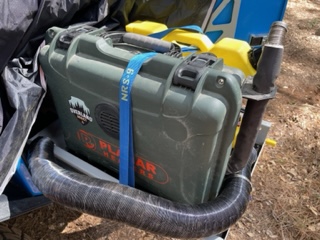
8. Electrical Requirements
Your RV battery can only handle so much. You must allocate its energy properly to ensure you have enough juice to get you to your next destination.
That’s especially the case when boondocking, as you don’t have any reliable power sources around. Even if you’re connected to shore power, you’re usually limited to a certain amount so other campers can have electricity too.
This means you must be cognizant of the amount of power a diesel heater demands so you can meter it out. Some models are extremely electricity-efficient, requiring 0.5 amps to keep running. However, expect up to two amps on average for continuous use.
Be aware that almost every diesel heater requires more power during startup, anywhere from eight to 12 amps. Once the unit is up and running, its electrical demands stabilize and remain consistent.
If you turn off other sources of electricity overnight, you can keep a diesel heater running all night, even when boondocking. I’d especially recommend a model with 0.5 amps, as this won’t stress the battery load.
9. Warranty
Craftsmanship defects don’t always reveal themselves immediately, which is why a warranty is a useful feature. It’s maybe not the most important thing to look for when buying a diesel heater, but it helps.
You can contact the manufacturer if your heater begins to degrade in quality due to assembly errors. The manufacturer will either request you send the diesel heater back for repairs or issue you a replacement.
You don’t need a lengthy warranty for a diesel heater. If the manufacturer offers a warranty of at least a year, that’s a good start, but a two-to-five-year warranty is even better.
10. Fuel Efficiency
I saved among one of the most important considerations for last as you search for the right diesel heater for your RV. It’s fuel efficiency!
Diesel heaters run on–you guessed it–diesel. Running your heater on low will typically suck up about 0.10 liters of fuel an hour. This is surprisingly little, enough that you’ll use only a liter of fuel in 10 hours.
However, you might still feel cold on the low setting. What if you bumped up the heater? Well, it depends on the model, but some diesel heaters can use up to one gallon of fuel per night.
Let’s use that as our baseline. You’d need seven gallons of fuel if you camp out seven nights a week in your motorhome.
Fuel costs have been all over the map. In 2018, fuel cost $2.95 a gallon. In 2022, prices skyrocketed to $3.66 a gallon.
Currently, the cost is $3.58 a gallon in the United States. However, individual states might see higher or lower prices across the country, so use that $3.58 as a guideline.
You’d pay $28.64 to fuel up your diesel heater every week. If you live in your motorhome full-time and use the heater every night, you’d spend $114.56 per month to heat your vehicle.
That’s in addition to what you’re paying at the pump to fuel up your motorhome. RVs use unleaded gasoline, which costs $4.04 a gallon for mid-grade fuel and more if you want the good stuff.
If you own a Class A motorhome, you might pay to refuel every six to eight miles. You can easily spend hundreds on gas with that mileage.
The additional monthly fuel expense on top of it will put a pinch on your wallet. Fortunately, winter does not last forever in most parts of the country. Although you’ll spend a lot of cash to camp in your motorhome for half the year, the other half will not require a diesel heater.
You’ll get a much-needed break!
Conclusion
Diesel heaters are a safe, efficient indoor heating option for motorhomes and other enclosed vehicles. However, they run the gamut in terms of quality, especially if you buy cheaply-made heaters.
The factors I identified today will help you buy a durable, quiet diesel heater that can keep you and your loved ones snuggly and toasty on those cold winter nights. You’ll enjoy more time in your motorhome, and who doesn’t want that?
